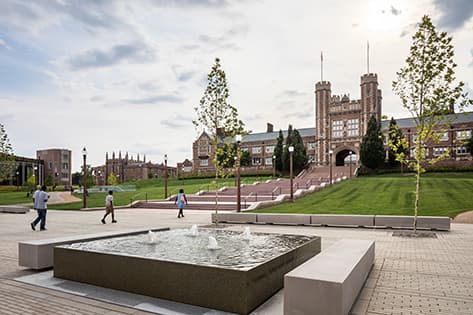Last word: Communication
Doctoral students, especially those in a field as complex and jargon-filled as engineering, are often told that they don’t fully understand a concept until they can explain it to their family. But what if, instead of your cousin or grandparent, you had to explain it to your 17-year-old neighbor?
Every year, graduate students in the Lake Lab and others do exactly that. Through a partnership with Pattonville High School’s Project Lead the Way Biomedical Sciences Program, they share their research with high school students through interactive demos to introduce them to potential career paths in engineering.
But the program benefits the graduate students just as much. Describing your work to a teenager who has never done experiments like “flow cytometry” or “histological staining” and doesn’t understand terms like “myofibroblast proliferation” or “arthrogenic contracture” requires you to be more creative with your word choice. It also forces you to reconsider any assumptions you may take for granted. You designed your experiment this way because that’s how your lab has always done it. You use this method because that’s what everyone in the field uses. Even if you have accepted these assumptions as facts, a high school student might not, prompting you to explain the reasoning behind them.
Communicating results is an essential part of a doctoral candidate’s education and is typically accomplished by delivering talks at lab meetings, presenting posters at conferences and writing papers to be published. But these communications often stay within the same field and rarely leave academia. Pushing beyond this boundary to share your work with people outside of a university setting not only benefits the high school students and graduate students, but also has the potential to affect broader communities by influencing public policy, increasing trust in science and inspiring the next generation of engineers.
Describing your work to a teenager who has never done experiments like ‘flow cytometry’ or ‘histological staining’ and doesn’t understand terms like ‘myofibroblast proliferation’ or ‘arthrogenic contracture’ requires you to be more creative with your word choice.
-Rebecca Reals

